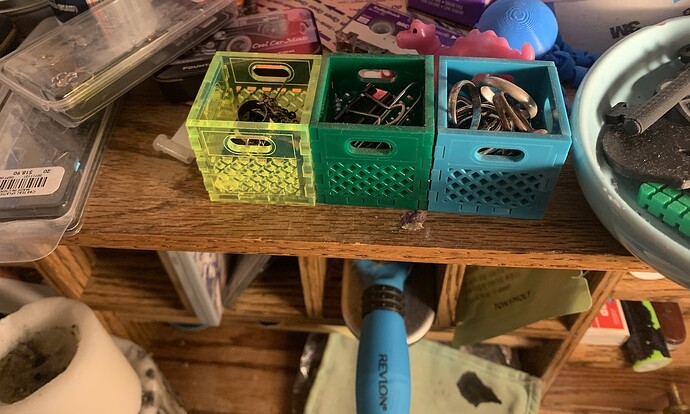Thx! The milk crate was from the @odzicari post from March '22 - 1.5" Milk Crate
Every GF person should make a milk crate, the plan is in the thread. ![]()
That plan should be adjusted for the new eco-thin materials and reposted, especially given the new Aura users. I might even give it shot as Lightburn practice. I’d make more with this Eco-Thin plastic just to have a few more. They are super handy, my kid uses theirs for jewelry findings to this day.
